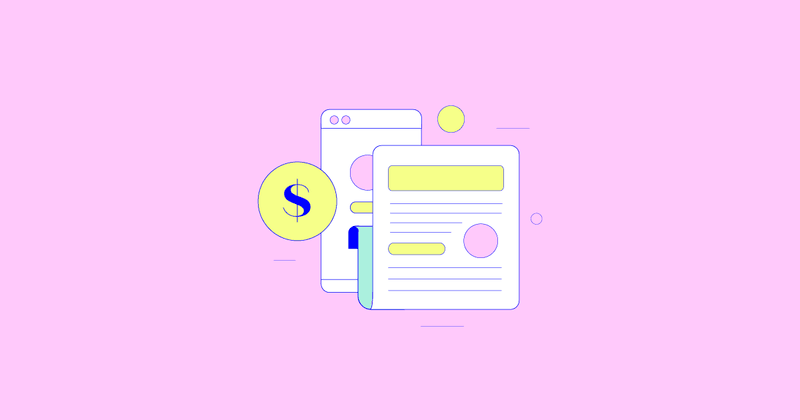How in-app monetization presents both a challenge and opportunity for publishers
And what are some of the strategies used by major publishers?

Jonas Åström is the Founder and CEO at Recuro, a subscription growth company that helps companies grow sustainably with recurring revenues. Visit their website for more information or schedule a discovery call.
Over the past decade, many publishers and media outlets have seen their digital ad revenue decline. This led them to turn to reader monetization instead. In 9 out of 10 cases, this monetization is built on digital subscription models.
This has worked well. Some would say surprisingly well.
The New York Times leads this development, now boasting over 10 million subscribers (including sub-brands such as The Athletic). In some regions, particularly Northern Europe, up to 40% of the population now say they pay for online news (Reuters Institute Digital News Report 2022).
Many of these publishers are incumbents with strong brands and organic website traffic. This has allowed them to monetize their users directly, without any middle-men. This is great news (pun intended) for the publishers, but presents a missed opportunity: In-app monetization.
The benefits (and the problems)
In general, publishers can benefit hugely from providing a well-performing app to their users. Here are some key benefits to consider:
- Apps build habits. Publishing is all about habit. That icon on the home screen of your phone is far more accessible than typing in an URL.
- User experience. Native apps simply have a better user experience than websites, independent of how responsive they might be.
- Notifications. Engagement driver retention and reducers churn. A good notification strategy is a great way of engaging the readers.
- Simple checkout. Google Play and Apple App Store have perfected a smooth checkout process, where payment details are usually prefilled.
So what’s the problem? Well there are actually two: Margin and user data.
Firstly, as the publishers are “spoiled” with direct end-user monetization, often via organic channels, they are reluctant to share their margin. And rightfully so. Google Play’s service fee is currently at 15% for subscriptions (for the first million USD in earnings). Apple App Store’s is 30% for the first year and then drops to 15%. Publishing is somewhat of a low margin business and these companies are not very happy about giving away 15-30% of their most important revenue stream to Google and Apple.
Secondly, and perhaps more important in the long-run, publishers are used to having a direct channel to their readers. They want to own that relationship in full. Google and Apple will become an undesired middle-man, limiting the publisher’s relationship with their user.
Some of the ways publishers can make use of apps
Are there any solutions? Yes, a few. Here are some strategies for how publishers can utilize apps, along with their pros and cons:
- Open up the app for everyone
- Pros: It’s easy.
- Cons: You can’t monetize your audience with subscriptions, but it can provide some traffic and branding, and perhaps other sources of revenue. You probably won’t build a lot of data points.
- Example: CNN News app.
- Force free login, but don’t monetize
- Pros: Builds some data on your users.
- Cons: Not great for monetization.
- Example: Chicago Tribune app.
- Keep the checkout outside of the app
- Pros: You’ll avoid the fees from Apple & Google.
- Cons: You will miss out on conversion from the app.
- Example: No large publishers I’ve found utilize this tactic currently.
- Utilize app store for checkout
- Pros: Smooth checkout process for users.
- Cons: Fees!
- Example: The New York Times and many others.
A variant of the last strategy is to differentiate the pricing between the in-app purchases and your desktop/mobile site (or other channels). This is a strategy that is implicitly used widely today, as publishers usually have rebates on the website, but offer only full pricing via their app.
In some cases, publishers can get an exemption from Apple, to be able to link to their own checkout flow, thereby driving conversions via the app without the fees. This exemption only applies to what Apple calls “reader” apps. Read more about the External Link Account Entitlement here. This is a strategy used by Swedish publisher Dagens Nyheter and several others.
Note that this is only relevant for the Apple App Store, so if you have an Android app, you need another strategy as a complement. However, you should keep an eye on the User Choice Pilot and see how that develops.
What about the startups?
There are some great examples of new publishing startups which reside natively in the app stores. One example is informed.so which goes all-in. All news consumption and subscriptions are managed via the Stores and their website is just a paywall with the CTA to download the app.
This is an interesting strategy which larger publishers can take inspiration from.
You might also like
- Blog post
Modeling attribution on iOS: what works, what doesn’t, and how to choose
How to navigate the messy world of SKAN, AEM, and probabilistic attribution — plus two practical frameworks to get a clearer picture of campaign performance.
- Blog post
Your sprints must pay for themselves: Dan Layfield’s product advice
What’s worth building? Dan Layfield shares a 3-bucket framework to help app teams prioritize features, fix churn, and ship faster.
- Blog post
Is monetization hurting your app’s user experience?
Don’t trade short-term revenue for long-term trust. How ethical UX can still drive effective monetization.

